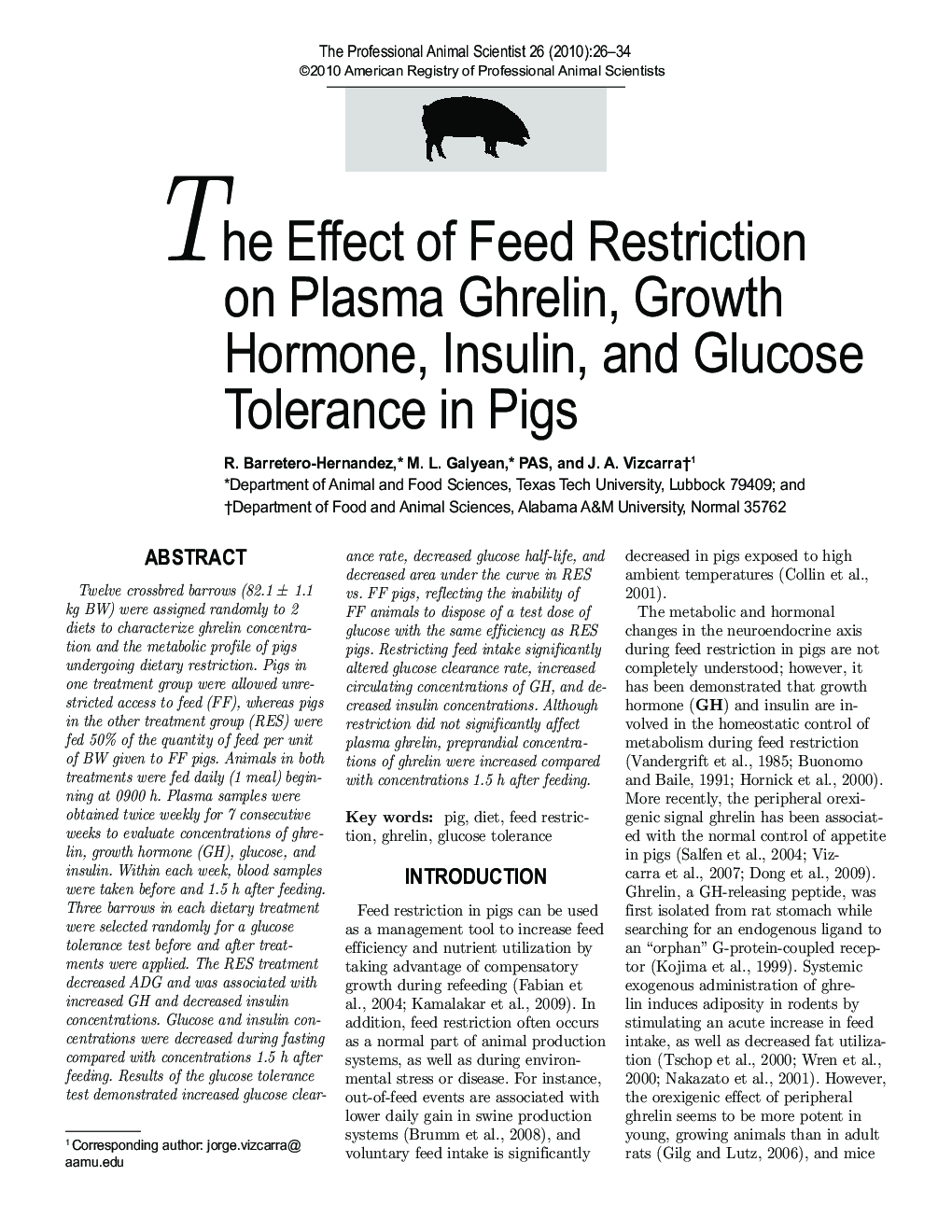| Article ID | Journal | Published Year | Pages | File Type |
|---|---|---|---|---|
| 2454318 | The Professional Animal Scientist | 2010 | 9 Pages |
Abstract
Twelve crossbred barrows (82.1 ± 1.1 kg BW) were assigned randomly to 2 diets to characterize ghrelin concentration and the metabolic profile of pigs undergoing dietary restriction. Pigs in one treatment group were allowed unrestricted access to feed (FF), whereas pigs in the other treatment group (RES) were fed 50% of the quantity of feed per unit of BW given to FF pigs. Animals in both treatments were fed daily (1 meal) beginning at 0900 h. Plasma samples were obtained twice weekly for 7 consecutive weeks to evaluate concentrations of ghrelin, growth hormone (GH), glucose, and insulin. Within each week, blood samples were taken before and 1.5 h after feeding. Three barrows in each dietary treatment were selected randomly for a glucose tolerance test before and after treatments were applied. The RES treatment decreased ADG and was associated with increased GH and decreased insulin concentrations. Glucose and insulin concentrations were decreased during fasting compared with concentrations 1.5 h after feeding. Results of the glucose tolerance test demonstrated increased glucose clearance rate, decreased glucose half-life, and decreased area under the curve in RES vs. FF pigs, reflecting the inability of FF animals to dispose of a test dose of glucose with the same efficiency as RES pigs. Restricting feed intake significantly altered glucose clearance rate, increased circulating concentrations of GH, and decreased insulin concentrations. Although restriction did not significantly affect plasma ghrelin, preprandial concentrations of ghrelin were increased compared with concentrations 1.5 h after feeding.
Related Topics
Life Sciences
Agricultural and Biological Sciences
Animal Science and Zoology
Authors
R. Barretero-Hernandez, M.L. PAS, J.A. Vizcarra,
